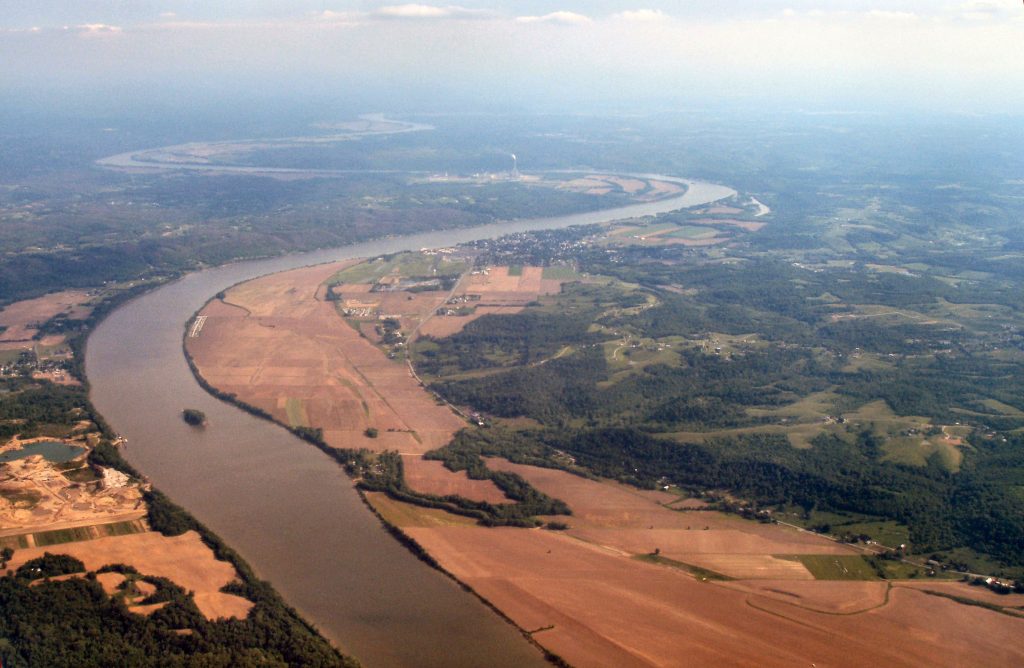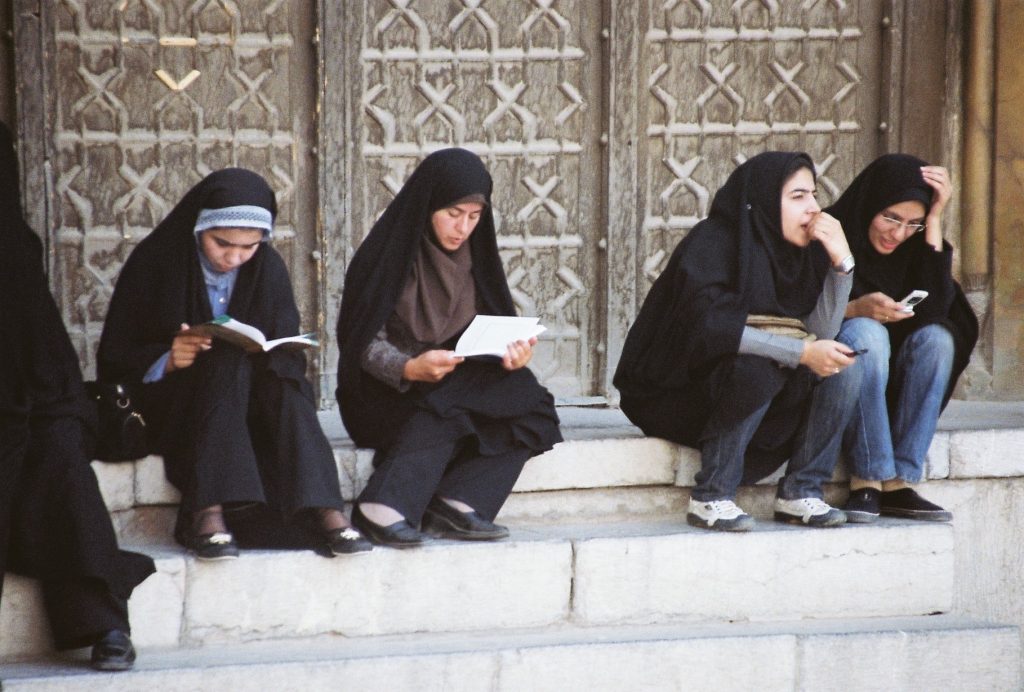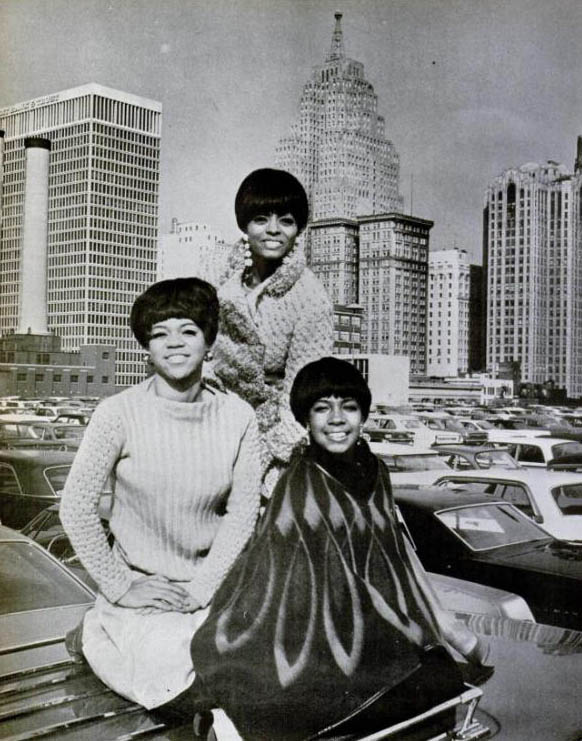“Of Waterways and Runaways: Reflections on the Great Lakes in Underground Railroad History,” by Tiya Miles,” nonfiction by Tiya Miles, appeared in the Summer 2011 issue of MQR.
I have been dwelling, as of late, on the topic of the Underground Railroad in Michigan and the Midwest, in part because the 150th anniversary of the Civil War has pushed public memory of slavery and abolitionism into the foreground. Our central city of Detroit has actively engaged this moment, with recent author and descendant presentations on local Underground Railroad figures hosted by the Detroit Historical Society, the creation of an Underground Railroad Committee of the non-profit Detroit River Project (designed to chart the cultural heritage of the river), and an upcoming exhibit at the Charles H. Wright Museum of African American History.[1] All of this activity is decidedly to the good and contributes to our sense of a common, powerful past. However, in attending and contemplating these and other commemorations, I cannot help but notice the obvious: in our shared public imagination, the action and intrigue of Underground Railroad history is often centered on private homes. The plethora of claims that “a fugitive slave slept here” made through Underground Railroad house plaques, house tours, city-sponsored “freedom trails,” and even a Home and Garden Television special on “Homes of the Underground Railroad,” illustrate and continually reinvigorate this emphasis on static, enclosed domestic space. When verification of a home’s history is reliable, these tours, images, and descendant testimonials are more than arresting. But there is, I think, a cost to this fixation on the houses where slaves were once concealed. In addition to fixing our attention on homeowners or “station masters” rather than on black self-emancipators, this focus on houses has the effect of drawing our awareness away from other vital places that made escape from slavery possible. I am thinking now of paths and roads, of Indian trails and encampments, and especially here in the Great Lakes, of waterways. What stories of this epic movement for human rights would be unearthed if we took note of these more open and often transitory spaces? And what new insights would such stories yield about the motion and multiplicities of the Underground Railroad?
Here in the Great Lakes region of the Midwest, waterways were especially pivotal to Underground Railroad history, and movement to and across those waters highlights the remarkable bravery, determination, and resourcefulness of escaping slaves as well as their allies. The Old Northwest (the Midwestern territory designated by the Northwest Ordinance of 1787) was central ground for abolitionist struggle in the middle decades of the nineteenth century because of its location on two liquid borders. The line between the slaveholding country of the U.S. and the free realm of British-controlled Upper Canada (or Canada West), and the line between the slave state of Kentucky and the free state of Ohio flowed through this region in the form of water.[2] The winding rivers and ample lakes that characterized the area’s geography and marked the boundaries between and among colonial-European states and Native nations also became physical markers, signs, and routes of the Underground Railroad. In the words of Wilbur Siebert, the first academic historian of the Underground Railroad, the Old Northwest Territory was host to a “multitude” of “lines” rendered more effective by “a length of frontier greatly increased by the sinuosities of the rivers.”[3] Traversing the Ohio River from Kentucky meant hope for hundreds of fugitives, while the Detroit River represented “one more river to cross” for many, the final leg on the long journey of self-liberation.[4] Detroit became the major port of exit for runaway slaves from the United States before and especially after Great Britain abolished slavery in its Canadian territories and the rest of the Empire in 1833.[5] Lake Michigan on the Illinois routes, Lake Erie on the Ohio and Pennsylvania routes, and Lake Ontario on the New York routes also served as transitional, transformative spaces in bondsmen and -women’s movement toward emancipated lives.[6]
Long before the Underground Railroad was born, control over the Great Lakes area was continually contested by European imperial and American indigenous powers.[7] The organized rebellion of the Ottawa leader, Pontiac, against the British; the Seven Years’ War between the British and French; the American Revolution; the pan-Indian resistance led by the Shawnee strategist Tecumseh and his prophet brother, Tenskwatawa; the War of 1812—all these were major conflicts over claiming the Great Lakes terrain and setting the boundaries of competing national powers. (Even the intranational Toledo War of 1835, in which the state of Ohio and territory of Michigan dispatched armed militiamen to the Maumee River in a conflict over Ohio’s northern border, might be added to this list of border battles in the region.)[8] The final boundary between the U.S. and Great Britain (and the Native nations then situated “within” each) drawn across the face of the lakes was won in a series of wrenching wars and treaty negotiations. The aquatic nature of that border made it fluid in more ways than one. Like the unruly waves that composed its position, the political and cultural edges of the border would always be blurred, resulting in multifaceted opportunity for African Americans who sought to cross over.
The Great Lakes waterways (and sister rivers) that marked international borders at the same time demarcated and made possible a borderlands region of abutting and overlapping cultures. Native people who found themselves surrounded by French and then British settlements, French settlers who became subject to British authority, Michigan loyalists in Toledo who discovered that they now lived in Ohio, settlers from the Northeast and South who crossed the Appalachians into America’s First West—all these groups converged on or near a boundary that had been contested for generations.[9] This palimpsest of cultural ways written on the waters also profoundly shaped Underground Railroad history in the Great Lakes.[10] In the space between the lakes and the lands surrounding them, black slaves seeking new lives encountered people of British, French, American, and Native American backgrounds. Familiar character types of Underground Railroad lore do appear in the Upper Midwest. (We are not without our valiant Quakers, for instance, and notable among these is Laura Haviland, the fierce freedom activist from the Raisin River settlement of present-day Adrian, Michigan.) However, there are intercultural surprises in Underground Railroad history here that did not occur as frequently in regions beyond the cast of the lakes.
Through interviews conducted with black migrants to Canada in the 1850s, journalist Benjamin Drew documented the role of French settlers in the lives of newly arrived southern blacks. In the town of Windsor in particular, former slaves described the experience of working for French residents who had not relocated since the defeat of the French in the Seven Years’ War. John Little reported that “[w]ork was dull among the French,” and Isaac Riley and his wife were similarly discontented. Mrs. Riley contended that they had “rather hard times . . . among the French.” Since Riley deemed the pay by his French employer to be unsatisfactory, he crisscrossed the border in search of better wages: “Among the French near Windsor, I got small wages . . . I crossed over and got work and better pay in Michigan. They would have liked to have me remain . . . But I did not feel free in Michigan and did not remain.”[11] These black settlers’ work experiences among French Canadians, disappointing though they were, reflected the overlapping cultural geography that characterized Underground Railroad experience near the Great Lakes. They also reflected the fluidity of the border in everyday lives, as black laborers crossed back and forth between Michigan and Ontario, seeking better wages.
The following event is, in my view, an epitomizing story of the particular nature of Great Lakes Underground Railroad history, characterized, as it is, by cross-cultural encounter, a search for waterways, and the vestiges of international border wars. It is also a rare documented example of Native American involvement in Underground Railroad action. In his 1849 slave narrative, Josiah Henson describes the day that was to become one of the most memorable in his life. Henson, his wife Charlotte, and their young son were trudging, lost, through the Ohio wilderness on an old War of 1812 military road after having just escaped slavery in Kentucky. Exhausted, famished, and disoriented, the family became even more alarmed when they noticed a party of Indians watching them from a distance. Henson’s wife insisted that they turn back. But since his wife was injured and the road behind them long, Henson decided that they should continue on despite trepidation about what might result from a possible encounter with the Indians.
Soon the family did come upon a Native camp farther in the woods. Communities of Wyandots, Mohawks, Shawnees, and Cayugas still claimed their settlements and hunting grounds in northern Ohio where the Hensons lost their way in October of 1830.[12] But rather than the danger that they had feared, the family was relieved to find a hospitable welcome in what was most likely a Shawnee or Cayuga village.[13] Met with the residents’ apparent unfamiliarity with blacks, Henson fielded a series of questions, “to make them understand what we were, and whither we were going, and what we needed.” The villagers responded by providing the sojourners with food, comfort, and a “wigwam” to rest in. Equally important, the Indians provided directions, telling the Hensons that the lake they sought was twenty-five miles away and sending “some of their young men to point out the place where we were to turn off.”[14] The Henson family would later settle in the aptly named town of Dawn, Upper Canada, after traveling a route that had brought them across the Ohio River, into Indian country, and finally, across a Great Lake.[15]
A recent book on indigenous history and politics of the Great Lakes borderlands challenges the fixity of the U.S.-Canadian border by describing national boundaries as mere “lines written upon the water.”[16] Similarly, Laura Haviland, the radical Michigan Quaker who accompanied several slaves in their escapes from Kentucky to Ontario, once justified her transgressive mobility to a fellow abolitionist. When Levi Coffin, the well known antislavery advocate based in Cincinnati, challenged Haviland’s willingness to transverse borders as a woman alone, she responded by saying: “I see no geographical lines drawn in my Bible.”[17] The particular history of the Underground Railroad in the Great Lakes region has the potential to enlighten us in many ways, beginning, perhaps, with the salient reminder that some lines must be crossed.
NOTES
[1] To read more on the Underground Railroad in Michigan and the Midwest see: Carol E. Mull, The Underground Railroad in Michigan (Jefferson, NC: McFarland and Co. Inc., 2010); Fergus M. Bordewich, Bound for Canaan: The Underground Railroad and the War for the Soul of America (New York: Harper Collins, 2005); Charles Lindquist, The Underground Railroad in Lenawee, Seeds of Time No. 14 (Adrian, MI: Lenawee County Historical Society, 2005). For the Detroit River Project see: http://www.facebook.com/pages/The-Detroit-River-Project/165264333498533?sk=info. Accessed May 21, 2011.
[2] The shift from Kentucky slavery to Ohio freedom marked by the river between was not clear cut, as life for free blacks in Ohio was characterized by extreme racism and a work regime similar to Kentucky’s. See Matthew Salafia, “Searching for Slavery: Fugitive Slaves in the Ohio River Valley Borderland, 1830–1860,” Ohio Valley History Vol. 8, No. 4 (Winter 2008): 38–63, 39. The line between slavery and freedom at the Michigan-Ontario border was likewise ambiguous in the late eighteenth and early nineteenth centuries. The Great Lakes region as a whole had a long tradition of slavery and servitude among Native nations and then perpetrated against Native people by French and British colonists. Although the first Lieutenant Governor of Upper Canada (Ontario), John Graves Simcoe, passed a provincial act against slavery in 1793, the act only prohibited bringing new slaves into the territory. Canadian residents still owned slaves who sometimes escaped into Michigan, where they would not be remanded. Michigan also had a small, enslaved population at the turn of the nineteenth century (twenty-four slaves in 1810), and Michigan slaves fled into Canada, where they would not be remanded. Brett Rushforth, “’ A Little Flesh We Offer You,’ The Origins of Indian Slavery in New France,” in Alan Gallay, ed., Indian Slavery in Colonial America (Lincoln: University of Nebraska Press, 2009), 353–390; E.A.S. Demers, “John Askin and Indian Slavery at Michilimackinac,” in Alan Gallay, ed., Indian Slavery in Colonial America (Lincoln: University of Nebraska Press, 2009), 391–416. Jacqueline L. Tobin with Hettie Jones, From Midnight to Dawn: The Last Tracks of the Underground Railroad (New York: Anchor Books, 2008), 5. Bordewich, Bound for Canaan, 114. David M. Katzman, “Black Slavery in Michigan,” American Midcontinent Studies Journal xl (fall 1970), 56–66, 61–62.
[3] Wilbur H. Siebert, The Underground Railroad from Slavery to Freedom (New York: Arno Press and the New York Times, 1968), 134.
[4] Elizabeth A. Perkins, Border Life: Experience and Memory in the Revolutionary Ohio Valley (Chapel Hill: University of North Carolina Press, 1998), 46. Tobin and Jones, Midnight to Dawn, ix.
[5] Fergus M. Bordewich, Bound for Canaan, 257, 113–114. Siebert, Underground Railroad, 135, 146–147. Lindquist, Underground Railroad in Lenawee, 5.
[6] Siebert, Underground Railroad, Map of the Underground Railroad System, 113.
[7] Bowes, Exiles and Pioneers, 17. Andrew R. L. Cayton and Peter S. Onuf, The Midwest and the Nation: Rethinking the History of an American Region (Bloomington: Indiana University Press, 1990), 3. James Z. Schwartz, Conflict on the Michigan Frontier: Yankee and Borderland Cultures, 1815–1840 (DeKalb: Northern Illinois University Press, 2009), 4. Frederic Austin Ogg, The Old Northwest: A Chronicle of the Ohio Valley and Beyond (Yale University Press, 1919), 1, 8, 20, 74–75.
[8] Schwartz, Conflict on the Michigan Frontier, 30–51. Cayton and Onuf, Midwest, 13–14. Helen Hornbeck Tanner, ed. Atlas of Great Lakes Indian History (Norman: University of Oklahoma Press, 1986), 138. See also: Don Faber, The Toledo War: The First Michigan-Ohio Rivalry (Ann Arbor: University of Michigan Press, 2008); Jim Path, The Toledo War and the Battle of Phillips Corners, Seeds of Time No. 7 (Adrian, MI: Lenawee County Historical Society, 2001).
[9] For recent work on Native American history and the Great Lakes borderlands, see Karl S. Hele, ed., Lines Drawn upon the Water: First Nations and The Great Lakes Borders and Borderlands (Waterloo, Ontario: Wilfrid Laurier University Press, 2008); Lisa Philips Valentine and Allan K. McDougall, “Imposing the Border: The Detroit River from 1786 to 1807,” Journal of Borderlands Studies, Special Issue: The Canadian-American Border: Toward a Transparent Border? Vol. 19, No. 1 (2004): 13–22; John P. Bowes, Exiles and Pioneers: Eastern Indians in the Trans-Mississippi West (Cambridge: Cambridge University Press, 2007); Daniel P. Barr, ed. The Boundaries between Us: Natives and Newcomers along the Frontiers of the Old Northwest Territory, 1750–1850 (Kent, OH: Kent State University Press, 2006); Gregory Evans Dowd, War under Heaven: Pontiac, the Indian Nations, and the British Empire (Baltimore: Johns Hopkins University Press, 2002); Michael Witgen, An Infinity of Nations: How the Native New World Shaped Modern North America (Philadelphia: University of Pennsylvania Press, forthcoming).
[10] With a focus on Native Americans and European settlers, Richard White captured the multilayered complexities of cross-cultural accommodation in the Great Lakes region with his now paradigmatic concept of a “middle ground,” defined as a “place in between: in between cultures, peoples, and in between empires and the nonstate world of villages.” Richard White, The Middle Ground: Indians, Empires, and Republics in the Great Lakes Region, 1650–1815 (Cambridge: Cambridge University Press, 1991), x.
[11] Benjamin Drew, A North-side View of Slavery: The Refugee: or, The Narratives of Fugitive Slaves in Canada (Boston: John P. Jewett and Co., 1856) 216, 300, 298. Also see Michael Wayne, “The Black Population of Canada West on the Eve of the American Civil War: A Reassessment Based on the Manuscript Census of 1861,” Histoire sociale/Social History 28 (1995), 465–485.
[12] Josiah Henson,The Life of Josiah Henson, Formerly a Slave, Now an Inhabitant of Canada, As Narrated by Himself (Boston: Arthur D. Phelps, 1849), 58. Tanner, Atlas, Map 25, 134; 136; 163; map 31, 164–165. Bowes, Exiles and Pioneers, 22.
[13] This supposition about the particular Native settlement that the Hensons likely visited is based on the village’s location near Lower Sandusky in the 1830s, at a distance of under thirty miles southwest from Lake Erie. Tanner, Atlas, map 31, 164–165.
[14] Henson, Life of Josiah Henson, 53–55. Bordewich, Bound for Canaan, 123–125.
[15] Henson, Life of Josiah Henson, 73–75.
[16] Hele, ed., Lines Drawn Upon the Water.
[17] “Statement of Laura S. Haviland,” in Calvin Fairbank, Laura Smith Haviland, Rev. Calvin Fairbank during Slavery Times (Chicago: R. R. McCabe & Co., 1890), 183–208, 197. For more on Laura Haviland, see: Laura S. Haviland, A Woman’s Life-Work: Labors and Experiences of Laura S. Haviland (Cincinnati: Walden and Stowe for the author, 1881).




